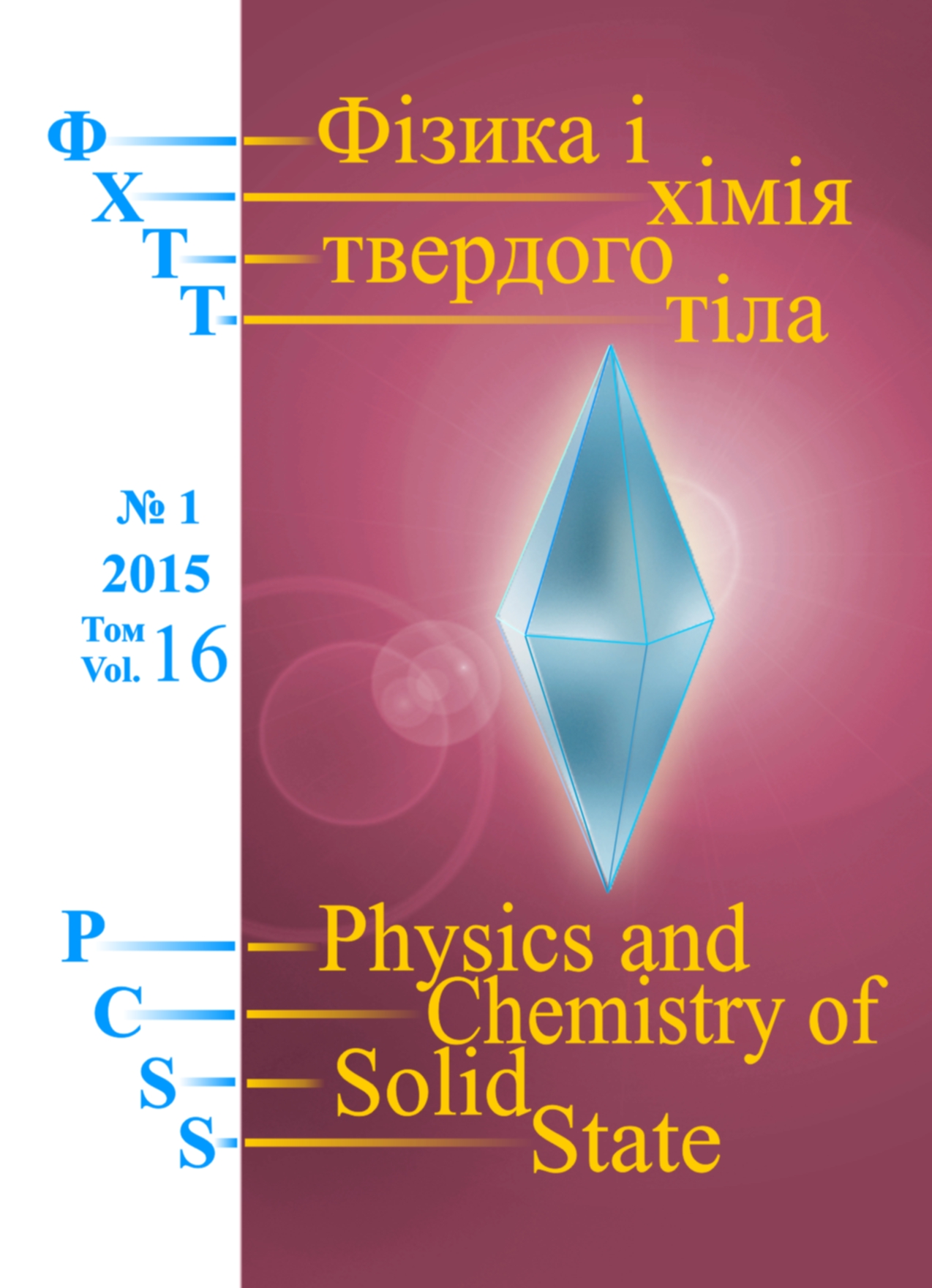Physics and Chemistry of Solid State
2015 Vol.16 №1 |
||
|
|
||
DOI: 10.15330/pcss.16.1.98-103
I.M. Budzulyak1, B.I. Rachiy1, V.M. Vashchynsky1, М.V. Berkeschuk2
Specific Capacitance Characteristics of Carbons, Activated by Potassium Hydroxide
1Vasyl Stefanyk Precarpathian National University, 57 Shevchenko Str., 76018
Ivano-Frankivsk, Ukraine, e-mail:bogdan_rachiy@ukr.net
2Kamianets-Podilsky Ivan Ohienko national university, e-mail:mishaberces@gmail.com
This work is devoted to the study of the charge accumulation in the electric double layer on polarized electrode of the electrochemical systems. A series of samples of the nanoporous carbon material obtained from natural raw materials. In order to improve the its performance it has been made the modification of porous structure of the samples by thermal and chemical treatment. As an activator potassium hydroxide was used. Determination of the specific characteristics of ultracapacitors was conducted in two-electrode cell by potentiodynamic and galvanostatic methods. The pore formation process was studied by simultaneous thermoanalyzer STA 449 F3 Jupiter. It is shown that the resulting materials have high values of capacitance, which is realized by charge accumulation in the electric double layer, the pseudo capacitance contribution is absent. The optimal modes of carbonization and chemical activation were defined. The dependence of specific characteristics on the modification mode has explained. It is shown that almost all the samples are highly resistant in a wide range of current densities.
Keywords: double electric layer, electrochemical capacitor, Nanoporous carbon material, capacitance.
Full text (on original language) .pdf
Home
Reference
[1] B.E Conway. Electrochemical supercapacitors. Scientific fundamentals and technological applications (Kluwer Academic / Plenum Publ., N. Y. 698 p., 1999).
[2] B.K. Ostafіjchuk, І.M. Budzuljak, M.M. Kuzishin, B.І. Rachіj, R.A. Zators'kij, R.P. Lіsovs'kij, V.І. Mandzjuk. Zhurnal nano- ta elektronnoї fіziki, 5(3), 3049 (2013).
[3] A.G. Pandolfo, A.F. Journal of Power Sources, 157, 11 (2006).
[4] Zhenhui Kang, Enbo Wang, Baodong Mao, Zhongmiu Su, Lei Chen and Lin Xu. Nanotechnology, 16 (8), 1192 (2005).
[5] O.N. Baklanova, G.V. Plaksin, V.A. Drozdov. Ros. him. zh. (Zh. Ros. him. ob-va im.D.I. Mendeleeva), XLVIII(3), 89(2004).
[6] Cunsheng Du, Ning Pan, Journal of Power Sources, 160, 1487 (2006)
.
[7] K. H. Radeke, K. O. Backhaus, A. Swiatkowski. Carbon, 29(1), 122 (1991).
[8] І. M. Budzuljak, V. І. Mandzjuk, R. P. Lіsovs'kij. Nanosistemi, nanomaterіali, nanotehnologії, 4(2), 569(2006).
[9] B. K. Ostafіjchuk, І. M. Budzuljak, B. І. Rachіj. Fіzika і hіmіja tverdogo tіla, 9(3), 609 (2008).
[10] Ju.M. Vol'fkovich, T.M. Serdjuk Jelektrohimija, 38(9), 1043 (2002).
[11] A.N. Kislicyn. Piroliz drevesiny. Himizm, kinetika, produkty, novye processy (Lesn. prom-st', M., 1990).
[12] S. Kamara Uglerodnye adsorbenty iz rastitel'nogo uglerodsoderzhashhego syr'ja Gvinejskoj respubliki (Dis. kand tehn. nauk, M., RHTU, 2002).
